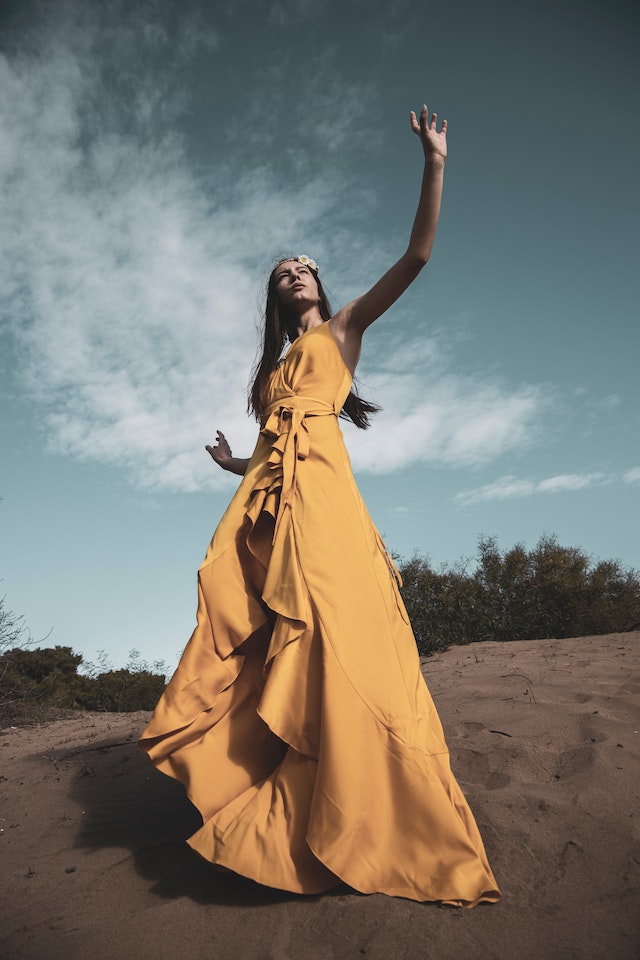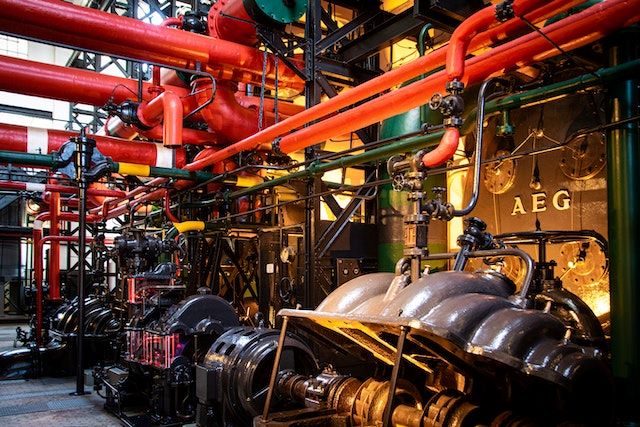Table of Contents
Introduction.
Like a chameleon, Viscose fabric, made from natural fibers such as artificial silk and rayon fibers, adapts to fashion’s ever-changing landscape. As I would say, a true viscose material meaning.
India’s Ministry of Textiles recorded the production of different fabrics in the country, including Viscose fabric. In 2022-23, around 1.5 million metric tons of Viscose fabric were manufactured in India.
These numbers highlight the significant production of Viscose fabric, a type of manufactured fiber, in India. Showcasing the country’s role as one of the leading silk and rayon manufacturers in the world textile industry, where natural fibers are highly valued.
I have been a part of the textile and apparel industry for over two decades, following in the footsteps of my family, which has been involved in this field for three generations. My dedication to this industry is unwavering, and I continue to contribute to its growth and development. To learn more about my background, please refer to the About Us page on my website.
Did you know that viscose fabric, made from regenerated cellulose fibers, is like a softer version of silk? This type of rayon offers a luxurious feel and smooth texture, making it a popular choice in clothing, upholstery, and home furnishings.
Viscose fabric drapes beautifully and allows for breathability, making it comfortable to wear in various climates. It is a great alternative to cotton sheets or synthetic materials, as it is made from natural raw material fibers.
Unlike natural silk, which comes from silkworms, viscose is manufactured using wood cellulose in the rayon production process. The resulting fibers are then woven into fabrics, such as sheets, that resemble the elegance of natural silk but at a more affordable price point.
So if you’re looking for a material that combines comfort and style, look no further than viscose fabric, a substance made from natural fiber.
Properties, Pros, and Cons of Viscose Fabric
Viscose fabric, also known as rayon, is a popular choice in the textile industry due to its unique properties and benefits. Made from wood cellulose, this silk-like fiber is used to create soft and luxurious sheets.
Moisture Absorption and Comfort
One of the notable properties of viscose fabric is its excellent moisture absorption, thanks to its silk-like fiber made from wood cellulose. This feature makes it an ideal choice for clothing items worn in warm weather conditions.
Unlike synthetic fabrics that tend to trap heat and moisture, viscose fabric allows air circulation, keeping the wearer cool and comfortable. Its ability to absorb sweat helps in preventing unpleasant odors. With its unique blend of silk, fiber, and wood cellulose, viscose fabric is perfect for creating breathable and comfortable sheets.
Luxurious Appearance and Drape

Viscose fabric, made from wood cellulose fiber, boasts a luxurious appearance that closely resembles silk. Its smooth texture gives it an elegant touch that can enhance any garment or home decor item.
Moreover, during the rayon production process, viscose sheets are created which effortlessly drape over the body, creating flattering silhouettes and adding a touch of sophistication to any outfit.
Wrinkling Tendency
While silk and rayon production offer numerous benefits, one drawback of viscose fabric is its tendency to wrinkle easily. The delicate nature of the fibre makes them susceptible to creasing even with minimal wear or storage.
To keep garments made from silk or rayon looking their best, special care must be taken during washing and ironing. It is advisable to follow the manufacturer’s instructions carefully or consider professional dry cleaning for more delicate pieces, such as sheets.
Shrinkage and Loss of Shape
Another aspect that needs consideration when working with viscose fabric, such as rayon used in silk sheets, is its potential for shrinkage or loss of shape after washing.
This characteristic arises from the natural behavior of cellulose fibers, like in rayon production, when exposed to water. To minimize these effects, it is essential to follow proper care instructions, for example, hand washing in cold water or using a gentle cycle on your washing machine.
Production Process of Viscose Fabric

Viscose fabric, also known as rayon, is a popular material in the fashion industry. It is made through a complex manufacturing process that involves several steps to create the soft and versatile fabric we know and love. For example, viscose fabric is widely used in clothing and upholstery due to its softness and versatility.
The production of viscose fabric begins with the raw material, which is typically wood pulp or bamboo. These natural materials, such as rayon, are broken down into small fibers and dissolved in a chemical solution called viscose. This viscose solution serves as the base for creating the fabric. For example, rayon is commonly used in this process.
Once the wood pulp or bamboo has been transformed into viscose for rayon production, it is ready to be further processed. The viscose solution is extruded through fine holes, forming filaments that are chemically treated to create fibers with unique properties like strength and flexibility.
After the rayon fibers have been created, they are spun into yarns using spinning machines. These yarns can then be woven or knitted into fabrics of various textures and thicknesses. The versatility of rayon fabric allows it to be used for a wide range of products, including clothing, upholstery, and home textiles.
It’s important to note that the production process of viscose fabric, made from rayon, requires careful handling of chemicals and waste disposal due to environmental concerns. Manufacturers must adhere to strict regulations to minimize the impact on ecosystems and human health.
To better understand the production process of viscose fabric, let’s break it down into steps. First, we start with rayon, a key material used in the making of viscose fabric. Then, we consult the Hansard archive for valuable insights on the production techniques.
- Raw Material Preparation: Wood pulp or bamboo is harvested and processed into small fibers for viscose rayon production. The process is documented in the Hansard archive.
- Dissolving: The fibers used in rayon production are dissolved in a chemical solution called viscose.
- Rayon production: Filament Formation: The viscose solution is extruded through fine holes to form rayon filaments.
- Chemical Treatment: The filaments undergo chemical treatments to enhance their properties in the viscose process of rayon production, resulting in the production of high-quality viscose rayon.
- Fiber Creation: The treated viscose rayon filaments are spun into yarns using spinning machines.
- Weaving/Knitting: The viscose rayon yarns are woven or knitted into fabrics of various textures.
- Finishing: The viscose rayon fabric is subjected to finishing processes, such as washing and dyeing, to enhance its appearance and performance.
Throughout the production process, manufacturers need to ensure that the quality of viscose fabric, such as rayon, meets industry standards. This includes conducting tests for strength, colorfastness, and shrinkage resistance.
Market Qualities of Viscose Material.

If you have a project in mind and want to know which quality of rayon to use here is a list of market qualities along with their respective GSM. This could be a handy tool for reference.
- 30sf x 30sf – Reed 92 x Pick 64 GSM – 131 Plain Weave
- 2/40sf x 20sf – Reed 56 x Pick 44 GSM – 128 Plain Weave
- 30sf x 30sf – Reed 68 x Pick 60 GSM – 105 Plain Weave
- 40sf x 40sf – Reed 92 x Pick 72 GSM – 103 Plain Weave
- 30sf x 30sf – Reed 68 x Pick 48 GSM – 98 Plain Weave
- 30sf x 30sf HT – Reed 56 x Pick 44 GSM – 85 Plain Weave
If the above qualities seams fit to your project, we could take a step further and see how best we can work. So that you can produce products that are best suited to your clients.
Understanding the Differences: viscose vs polyester vs. Cotton
Viscose fabric, rayon, polyester, and cotton are three popular materials used in various applications. Each material has its own unique properties that make it suitable for different purposes.
Viscose Fabric: Breathable and Comfortable
Viscose fabric, also known as rayon, is highly breathable and ideal for clothing items like shirts, dresses, and skirts. Unlike polyester, which lacks breathability, rayon offers superior air circulation. However, it’s important to note that cotton still surpasses both rayon and polyester in terms of breathability.
One advantage of viscose fabric, also known as rayon, is its natural feel. Unlike polyester, which can sometimes feel artificial or plastic-like, viscose (rayon) has a cellulose-based composition that gives it a softer touch similar to cotton. This makes viscose (rayon) a preferred option for those who prioritize comfort and prefer natural fabrics.
Polyester: Durability with Less Natural Feel
Polyester, a durable and wrinkle-resistant fabric, is commonly used in clothing, upholstery, bedding materials like mattress protectors, and even parliamentary information documents. However, despite its strength and longevity, polyester lacks the natural feel of cellulose-based fabrics like rayon or cotton.
While some people may prefer the smooth texture of polyester, rayon is another popular fabric choice due to its low-maintenance nature and resistance to shrinking or stretching after washing. However, others find rayon less appealing compared to the softness of cotton or the breathable quality of viscose fabric.
Cotton: The King of Comfort
Cotton and viscose rayon reign supreme. Their high breathability allows air circulation through the fabric easily while absorbing moisture from the body—making them ideal for warm climates or sweaty situations.
Cotton and viscose rayon sheets are often favored by individuals seeking a cozy night’s sleep, as they provide a soft and comfortable feel against the skin.
However, cotton and rayon both have their drawbacks. Cotton tends to wrinkle more easily than polyester or viscose fabric, requiring ironing or steaming to maintain a crisp appearance. Nevertheless, many people are willing to overlook this minor inconvenience in exchange for the unparalleled comfort that cotton and rayon offer.
Sustainability of Viscose Fabric

Viscose fabric, also known as rayon, is derived from natural materials such as wood pulp or bamboo. While it offers a versatile and comfortable textile option, its production involves chemical processes that can have significant environmental impacts if not managed properly.
One of the key concerns with viscose fabric production, particularly rayon, is the use of toxic chemicals. The process typically begins with dissolving wood pulp in a solution containing sulfuric acid.
This chemical treatment helps break down the cellulose fibers and create a viscous liquid, which is then extruded into filaments to form the rayon fabric. Improper disposal of these chemicals can lead to pollution and harm ecosystems.
However, there are sustainable practices that can help mitigate these environmental concerns with viscose rayon. Many manufacturers are now sourcing their wood pulp from certified sustainable forests for viscose rayon.
These forests adhere to strict guidelines for responsible harvesting and reforestation, ensuring the long-term viability of the viscose rayon raw material source.
Another approach to improving sustainability in rayon fabric production is through closed-loop manufacturing. This method involves recycling and reusing chemicals throughout the rayon production process, significantly reducing waste and minimizing environmental impact.
By implementing closed-loop systems, rayon manufacturers can reduce water consumption and limit the release of harmful substances into surrounding ecosystems.
Recognizing the need for greater transparency and accountability in their supply chains, some brands are taking steps to improve the sustainability of their rayon fabrics.
They are implementing stricter guidelines for their suppliers regarding responsible sourcing practices and proper waste management. Traceability measures are being put in place to ensure that each step of the production process for Rayon meets sustainability standards.
Consumers also play a crucial role in promoting sustainability within the rayon industry. By choosing fabrics made from responsibly sourced rayon, they can encourage brands to prioritize environmentally friendly practices.
Look for certifications like FSC (Forest Stewardship Council) or PEFC (Programme for Endorsement of Forest Certification) when purchasing rayon products to ensure they have been sourced sustainably.
Exploring Different Types of Rayon
Rayon is a versatile and widely used fabric that comes in various types. While viscose is one type of rayon, there are other variations worth exploring, such as modal, lyocell, and bamboo rayon. Each type has its own unique characteristics and benefits.
Modal Rayon: Softness and Strength Combined
Modal rayon stands out for its exceptional softness and high wet strength compared to traditional viscose. This type of rayon is made from beech tree fibers, which are processed using a modern method known as the cuprammonium process.
The result is a fabric that feels incredibly smooth against the skin while also maintaining its strength even when exposed to moisture.
Modal rayon finds wide application in clothing items where comfort is key. From luxurious bed sheets to cozy loungewear, this type of rayon offers a delightful combination of softness and durability.
Lyocell (Tencel): Sustainable and Eco-Friendly
Lyocell, also known by its brand name Tencel, is another variation of rayon that has gained popularity due to its sustainable production process. Unlike traditional viscose or modal rayons, lyocell is produced in a closed-loop process that minimizes waste and uses non-toxic solvents.
Made from wood pulp sourced from sustainably managed forests, viscose rayon (also known as lyocell) offers an eco-friendly alternative for those concerned about the environmental impact of their clothing choices.
The resulting fabric is breathable, moisture-wicking, and gentle on the skin. From activewear to bedding materials, viscose rayon (lyocell) has found widespread use across various industries.
Bamboo Rayon: Sustainability with Natural Origins
Bamboo rayon shares many properties with traditional viscose but comes with the added benefit of being derived from a renewable resource – bamboo plants. This makes it an attractive option for environmentally conscious consumers looking for sustainable alternatives.
Similar to other types of rayon, bamboo rayon is soft, breathable, and moisture-absorbent. It can be used for a wide range of clothing items, including shirts, dresses, and even underwear. Its natural origins give it an extra appeal for those seeking eco-friendly fashion choices.
Debunking Misconceptions about Viscose Fabric
Viscose fabric, also known as rayon, has often been the subject of misconceptions, leading to misunderstandings about its true nature and qualities. Let’s shed light on these misconceptions and separate fact from fiction.
Not Plastic-Based, but Derived from Natural Cellulose Fibers
Contrary to popular belief, viscose fabric, also known as rayon, is not plastic-based. It is actually made from natural cellulose fibers obtained from wood pulp or other plant sources.
These rayon fibers undergo a chemical process to create a versatile material that can be used in various applications. By dissolving the cellulose and regenerating it into fibers, manufacturers produce soft, breathable textiles that are comfortable to wear.
Individual Sensitivities and Chemical Treatments Influence Skin Reactions
While some people may associate viscose fabric, also known as rayon, with skin irritation or allergies, it’s important to note that individual sensitivities to rayon play a significant role.
Just like any other fabric, reactions can occur if someone has specific allergies or sensitivities to rayon. However, it is essential to understand that these reactions are not inherent characteristics of viscose itself.
In some cases, chemical treatments during the production process of rayon can cause skin irritations. However, not all viscose fabrics undergo the same treatments. Opting for organic or naturally processed viscose fabrics can minimize the risk of adverse reactions for those with sensitive skin.
Durability Depends on Care and Blending with Other Fibers
The durability of rayon fabric largely depends on how it is cared for and whether it is blended with other fibers. On its own, pure rayon may be prone to wrinkling and losing shape over time. However, when blended with synthetic fibers like polyester or elastane, its strength increases significantly.
Proper care also plays a vital role in maintaining the longevity of rayon garments. Handwashing or using a gentle cycle in cold water helps prevent excessive stretching or shrinkage of viscose garments. Avoiding direct sunlight during drying can help preserve the color of the fabric and prevent weakening.
Varying Grades of Viscose Fabric Exist
Another misconception surrounding viscose fabric is the belief that it is always low-quality. In reality, there are varying grades of viscose available, depending on the manufacturing processes used, including rayon.
High-quality rayon fabrics, also known as viscose, undergo rigorous production methods that result in a refined final product. These rayon fabrics possess excellent drape, softness, and breathability. On the other hand, lower-grade rayon may be less refined and exhibit some of the negative characteristics associated with the material.
Conclusion
In conclusion, understanding the meaning of viscose rayon material opens up a world of possibilities for fashion enthusiasts and environmentally conscious individuals alike. By delving into its properties, production process, and sustainability aspects, you can make informed decisions about rayon.
Viscose fabric, also known as rayon, boasts a range of desirable properties such as breathability, softness, and drape ability. However, it is essential to consider the pros and cons of rayon before making a purchase decision. While viscose (rayon) offers comfort and versatility, it may also be prone to wrinkling and shrinking.
The production process of viscose fabric involves extracting cellulose from rayon wood pulp or other plant sources. This cellulose is then chemically treated to create rayon fibers that are spun into yarns used for weaving or knitting fabrics. Understanding this process sheds light on the intricate craftsmanship behind each piece of viscose clothing.
Comparing viscose, and rayon, with other popular fabrics like polyester and cotton reveals distinct differences in terms of texture, durability, and environmental impact. While polyester may offer wrinkle resistance and quick-drying properties, cotton provides breathability and natural comfort. Viscose strikes a balance between these two options by combining softness with eco-friendliness.
Sustainability is an increasingly important consideration in the fashion industry today. Rayon, also known as viscose fabric, has made significant strides towards becoming more sustainable through initiatives like responsibly sourced raw materials and closed-loop manufacturing processes.
By choosing sustainably produced rayon garments, you can contribute to reducing the environmental harm caused by fast fashion.
Exploring different types of rayon expands your knowledge about the diverse applications of viscose material in various industries. From modal rayon’s luxurious feel to lyocell rayon’s exceptional moisture-wicking abilities, each type offers unique characteristics that cater to different needs.
It is crucial to debunk misconceptions surrounding viscose fabric, also known as rayon, as well. Despite some claims about its lack of durability or potential for pilling, proper care, and maintenance can ensure the longevity of rayon garments.
By following the manufacturer’s instructions and adopting best practices for washing and storing viscose (rayon) garments, you can enjoy their benefits for years to come.
In conclusion, embracing rayon (viscose) material opens up a world of fashion possibilities while considering sustainability. By making informed choices about the properties of rayon, its production process, and its differences from other fabrics, you can confidently incorporate rayon into your wardrobe. Remember to prioritize sustainability by choosing responsibly sourced rayon options and debunk any misconceptions along the way.
With the above details resonate with the projects you have in hand or proposing to execute, we can share and exchange our thoughts. Do send me an email at [email protected] and we could build a lasting relationship. And Lastly wishing you great success in your current projects. And happy living. Bye.
FAQs
Is viscose fabric suitable for sensitive skin?
Viscose fabric, also known as rayon, is generally considered hypoallergenic and suitable for sensitive skin. Its natural breathability allows airflow, reducing the likelihood of irritation or discomfort.
Can I machine wash viscose clothing?
Most rayon garments, also known as viscose, can be safely machine washed on a gentle cycle. However, it is essential to check the care label instructions provided by the manufacturer to ensure proper maintenance.
Does viscose fabric shrink after washing?
Viscose fabric, also known as rayon, has a tendency to shrink when exposed to water or heat. To minimize this risk, it is recommended to follow the manufacturer’s instructions regarding washing and drying methods.
How do I remove wrinkles from viscose clothing?
To remove wrinkles from rayon clothing, you can use a steamer or iron on a low-heat setting. It is advisable to place a cloth between the iron and the garment to prevent direct contact.
Is buying sustainable viscose more expensive?
While sustainable rayon options may sometimes have slightly higher price points due to their eco-friendly production processes, there are affordable alternatives available in the market as well. It’s important to consider long-term value and environmental impact when making purchasing decisions.
Can I wear viscose fabric in hot weather?
Viscose fabric, also known as rayon, is breathable and perfect for warmer climates. It allows air circulation, promoting comfort and preventing excessive sweating.
Is viscose fabric biodegradable?
Viscose fabric, also known as rayon, is a biodegradable material made from plant-based cellulose. The rate of degradation of rayon may vary depending on manufacturing processes and chemical treatments.
Viscose material good or bad?
Viscose material has both positive and negative aspects. It offers a silky and breathable texture, making it comfortable to wear. However, it tends to wrinkle easily and may shrink or lose shape when exposed to water. Additionally, the production process involves chemicals and environmental concerns. Consider personal preferences, care requirements, and sustainability factors when deciding if viscose is suitable for your needs.
Viscose fabric for summer or winter?
Viscose fabric is suitable for both summer and winter. It has excellent breathability, making it comfortable in warm weather. In winter, it can provide insulation when layered with other garments. However, it is important to note that viscose tends to retain moisture, so it may not be the best choice for extremely humid or cold conditions. Consider the specific characteristics of the viscose fabric and the intended use when selecting it for different seasons.
Is viscose breathable?
Yes, viscose is a breathable fabric. It is made from wood pulp, which is a natural material that allows air to flow freely. This makes viscose a good choice for summer clothing, as it helps to keep you cool and comfortable.
Viscose is also a moisture-wicking fabric, which means that it helps to draw sweat away from your skin. This can help to prevent you from feeling clammy and uncomfortable in hot weather.
Is viscose sustainable?
Viscose production has environmental concerns, but sustainable practices exist. It is derived from renewable sources like wood pulp. However, the manufacturing process involves chemicals. Sustainable certifications and responsible sourcing initiatives can ensure more eco-friendly viscose production. Look for alternatives like lyocell or consider the brand’s transparency and commitment to sustainability.


